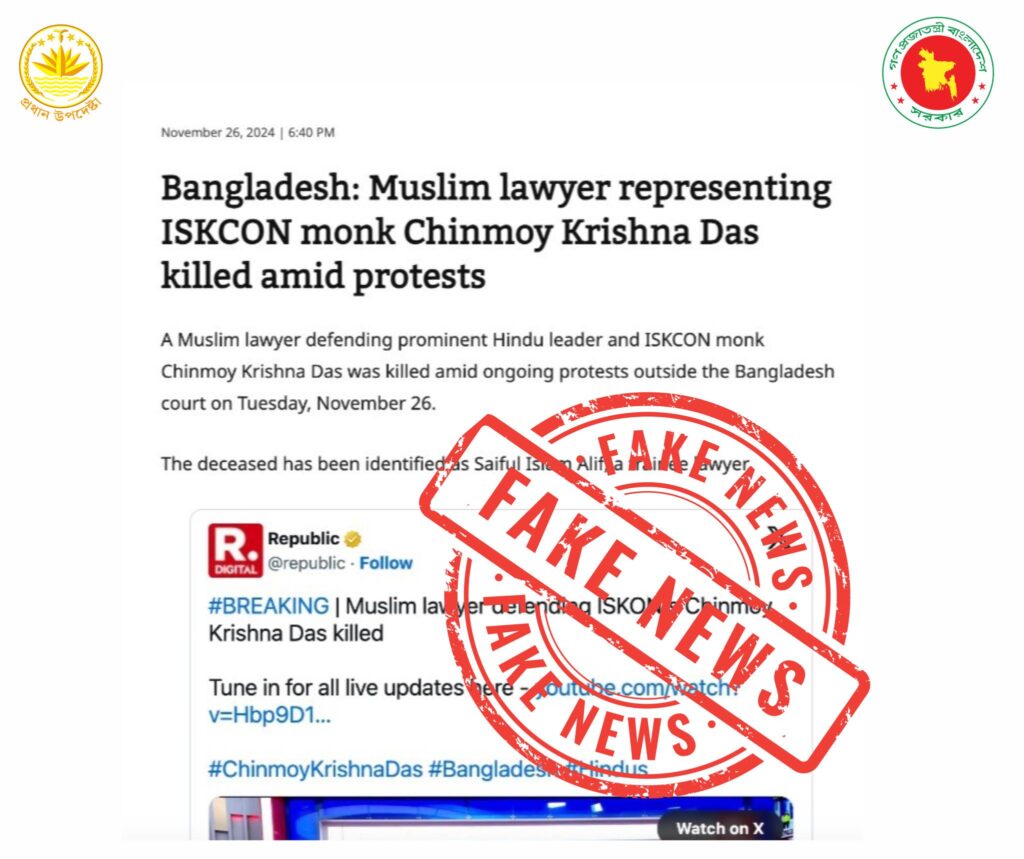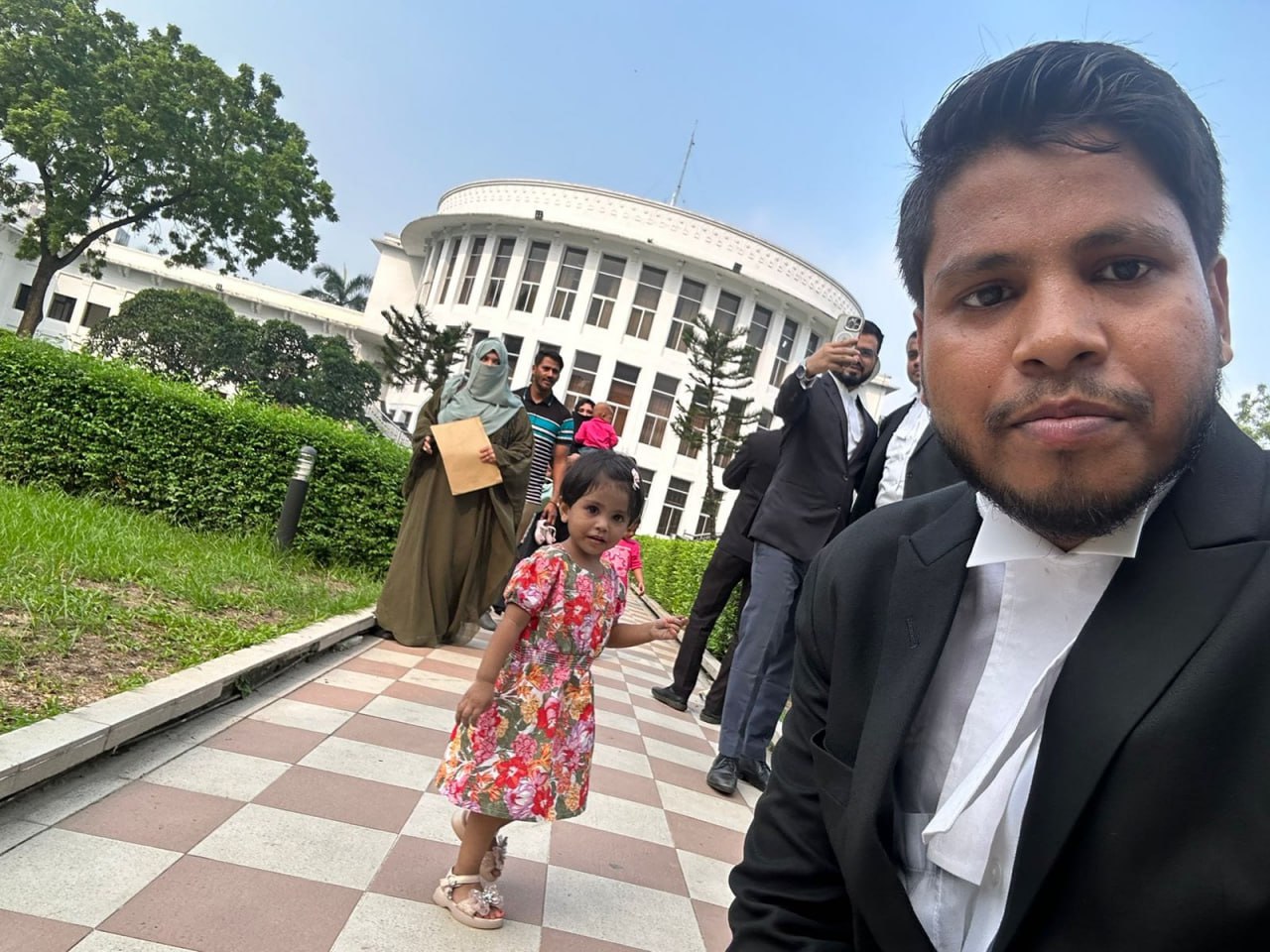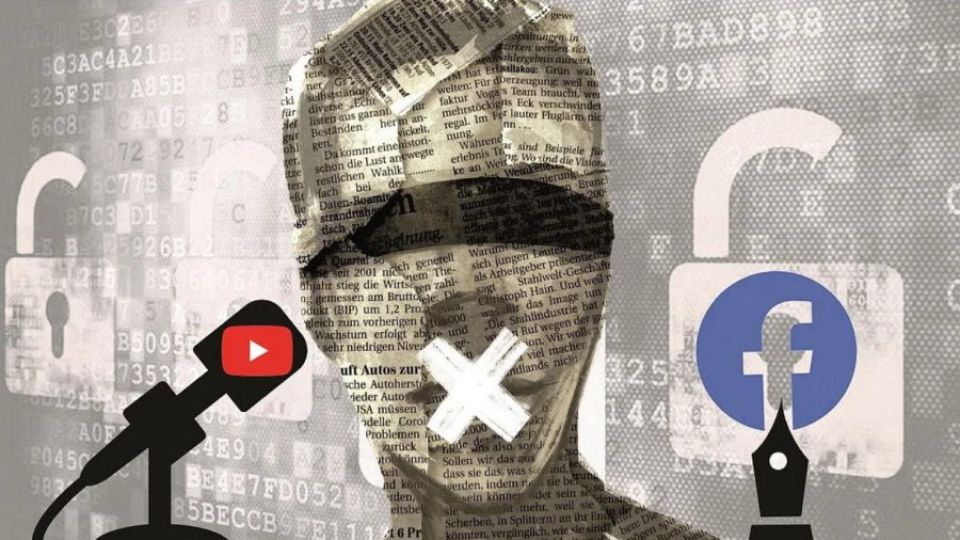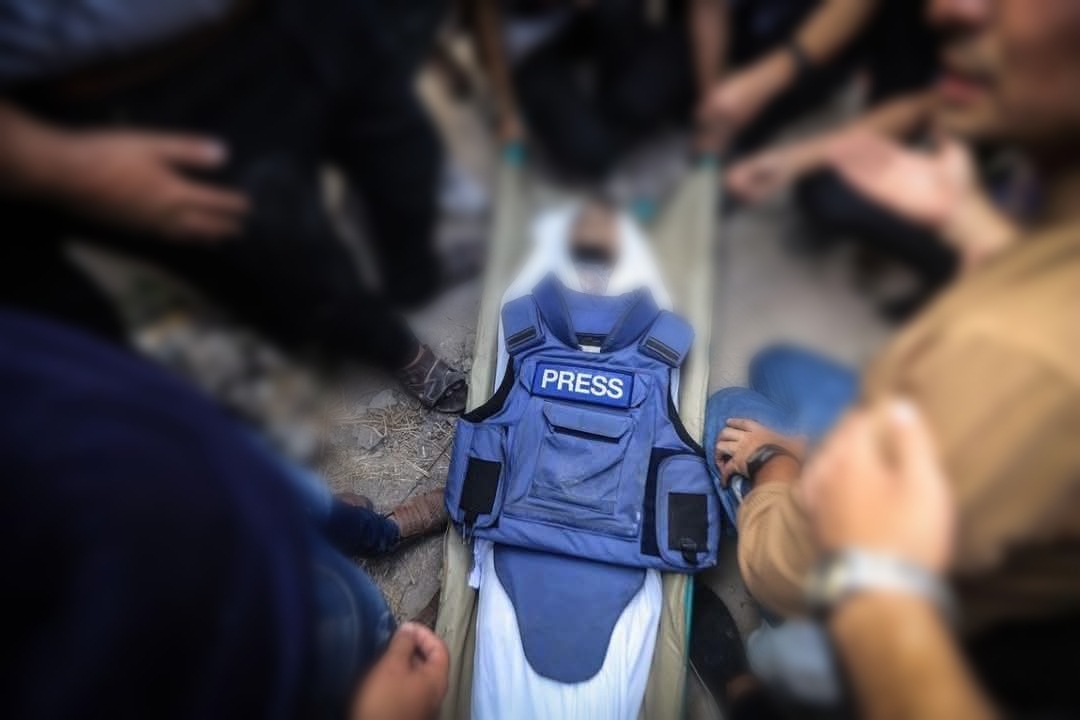Chittagong, Bangladesh – On November 26, clashes outside the Chittagong Court Building in Bangladesh resulted in the tragic death of lawyer Saiful Islam amid protests over the arrest of ISKCON monk Chinmoy Krishna Das. Indian media reports falsely claimed that Saiful Islam, a 32-year-old Muslim lawyer, was representing Chinmoy, sparking widespread controversy and highlighting the dangers of misinformation.
Several Indian media outlets, including OpIndia and Republic Media, reported that Saiful Islam was part of the defence team representing Chinmoy Krishna Das. According to these reports, Saiful was killed for defending the Hindu leader, framing the incident as a communal attack targeting minority-rights advocates. This narrative, however, has been debunked by multiple sources on the ground. Saiful Islam was not associated with Chinmoy’s legal defence team. The ISKCON monk’s actual lawyer is Adv. Subasish Sharma.
Adding to the clarification, the Bangladesh Chief Adviser’s Press Wing released an official statement via verified Facebook page, refuting the false claims:
“Some Indian media are claiming that lawyer Saiful Islam Alif, who was brutally murdered in Chittagong today, was representing Chinmoy Krishna Das. The claim is false and is being spread with malafide intention. The vakalatnama produced by Chinmoy Krishna Das to the Chief Metropolitan Magistrate Court has shown that advocate Subasish Sharma is his lawyer. We request everyone to refrain from any provocative, false report.”

OpIndia, Republic Media, and Reuters: The Spread and Correction of Misinformation
OpIndia and Republic Media: Driving the Misinformation Agenda
Indian media outlets OpIndia and Republic Media played a central role in spreading misleading narratives about the death of Saiful Islam during the unrest in Chittagong, Bangladesh. Their reporting, based on unverified claims, framed Saiful as a Muslim lawyer defending a Hindu monk, Chinmoy Krishna Das, despite this being factually incorrect.
OpIndia: Peddling Communal Narratives
Known for its right-wing editorial stance, OpIndia misrepresented the incident to fit its ideological agenda. The outlet claimed Saiful was killed for representing a Hindu leader in a Muslim-majority country, reinforcing communal narratives often used to portray Hindus as victims in international contexts. This narrative aligned with OpIndia’s typical strategy of fueling sentiments of persecution and victimhood among its predominantly Hindu nationalist audience.
Republic Media: Amplifying Sensationalism
Similarly, Republic Media, a major Indian television network with a sensationalist approach, amplified the false claim without verifying it. Republic Media’s coverage dramatized the incident, portraying Bangladesh as a hostile environment for minorities. This aligns with the network’s editorial preference for framing global incidents as part of a larger narrative of Hindu victimhood, often at the expense of journalistic rigor.
Both platforms ignored verified reports that Saiful Islam was neither part of Chinmoy Krishna Das’s legal team nor targeted for defending him. Instead, he was an unintended victim of violent clashes outside the court.
Reuters: A Case of Responsible Correction
Global news agency Reuters also initially published the incorrect claim that Saiful Islam was defending Chinmoy Krishna Das at the time of his death. This error, while unintentional, underscores how even reputable international outlets can fall prey to misinformation in a fast-moving news cycle.
However, unlike OpIndia and Republic Media, Reuters acted swiftly to address the error. Following the emergence of verified facts, the agency updated its report, issuing a clarification that Saiful was not part of the ISKCON monk’s legal team.
Reuters’ correction demonstrates the importance of accountability and adherence to journalistic ethics. By promptly rectifying its mistake, Reuters reinforced its commitment to factual reporting and avoided contributing further to communal tensions.
Shared Agenda and Consequences of Indian Media’s Reporting
OpIndia and Republic Media: Polarizing Narratives
Unlike Reuters, which corrected its mistake, Indian outlets like OpIndia and Republic Media have not revised or clarified their false claims. Their reporting appears to be part of a larger agenda to:
- Exacerbate communal tensions: By presenting a false narrative of Muslim-majority Bangladesh targeting a Hindu advocate, these outlets amplify distrust between communities.
- Bolster a victimhood narrative for Hindus: This aligns with their ideological leanings, which emphasize communal conflicts to reinforce a sense of Hindu persecution.
- Exploit cross-border incidents for domestic gains: Sensationalizing events in neighboring countries helps deflect attention from internal issues and sustains a polarized political climate.
The Cost of Misinformation
The false claims propagated by OpIndia and Republic Media, and briefly echoed by Reuters, have broader implications:
- Erosion of trust in journalism: When misinformation spreads unchecked, public confidence in the media diminishes.
- Strained diplomatic ties: Misinformation like this can harm India-Bangladesh relations, fostering unnecessary friction between the two countries.
- Heightened communal tensions: Such narratives deepen divisions both within India and across South Asia, a region already fraught with interfaith sensitivities.
The Importance of Responsible Journalism
While Saiful Islam’s tragic death amidst the Chittagong unrest is a solemn reminder of the consequences of societal tensions, the spread of misinformation about his role exacerbates the crisis. OpIndia and Republic Media leveraged this incident to further divisive agendas, while Reuters’ subsequent correction highlighted the responsibility of global media to uphold journalistic integrity.
This incident serves as a call for greater accountability in news reporting, emphasizing the need to prioritize verified facts over sensationalist narratives that can inflame already fragile communal relations.
The Real Story
Saiful Islam, a member of the Chittagong District Bar Association, was fatally attacked during violent clashes between police and Chinmoy’s followers outside the court, according to local media report. Eyewitnesses, including Nazim Uddin Chowdhury, President of the Bar Association, confirmed that Saiful was attacked by protesters near the court’s main gate. He succumbed to severe head injuries shortly after being rushed to Chittagong Medical College Hospital.
“The narrative suggesting Saiful defended Chinmoy is completely false,” said Chowdhury, urging restraint in reporting sensitive matters that could inflame communal tensions.
Impact of Misinformation
The misleading claims by Indian media have drawn criticism for their potential to escalate sectarian tensions in the region. By misrepresenting the victim’s role, these outlets portrayed the incident as a communal clash targeting a Muslim defender of a Hindu leader, shifting focus from the actual circumstances surrounding the violence.
Bangladeshi authorities and civil society leaders have condemned the spread of fake news. Chief Adviser Professor Muhammad Yunus called the killing of Saiful Islam a “heinous act” and demanded accountability for those spreading false narratives. “It’s critical that media reports facts responsibly, especially in cases that could deepen divisions,” he said.
Dr. Taslim Uddin, Director of Chittagong Medical College Hospital, confirmed the cause of Saiful’s death, stating, “He had deep injuries on his head.” Meanwhile, other injured individuals are being treated for wounds sustained during the clashes.
Media Responsibility Under Scrutiny
Indian media’s coverage of the incident has raised questions about journalistic ethics and accountability. Experts warn that sensationalist reporting, and misinformation can exacerbate tensions between communities, particularly in South Asia, where interfaith relations are often sensitive.
“This is a textbook example of how irresponsible reporting can distort facts and heighten communal sensitivities,” said a media ethics professor from Dhaka University. “Journalists must prioritize verification over sensationalism, especially when reporting on cross-border issues.”
The death of Saiful Islam is a tragic reminder of the human cost of unrest. However, the false portrayal of his role in the Chinmoy Krishna Das case by Indian media underscores the importance of accurate and responsible reporting. Authorities and media organizations are urged to combat the spread of misinformation to prevent further harm.







Leave a Reply